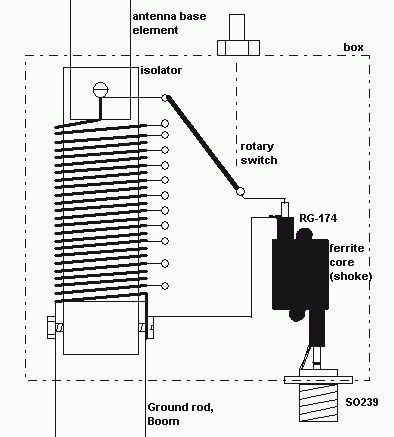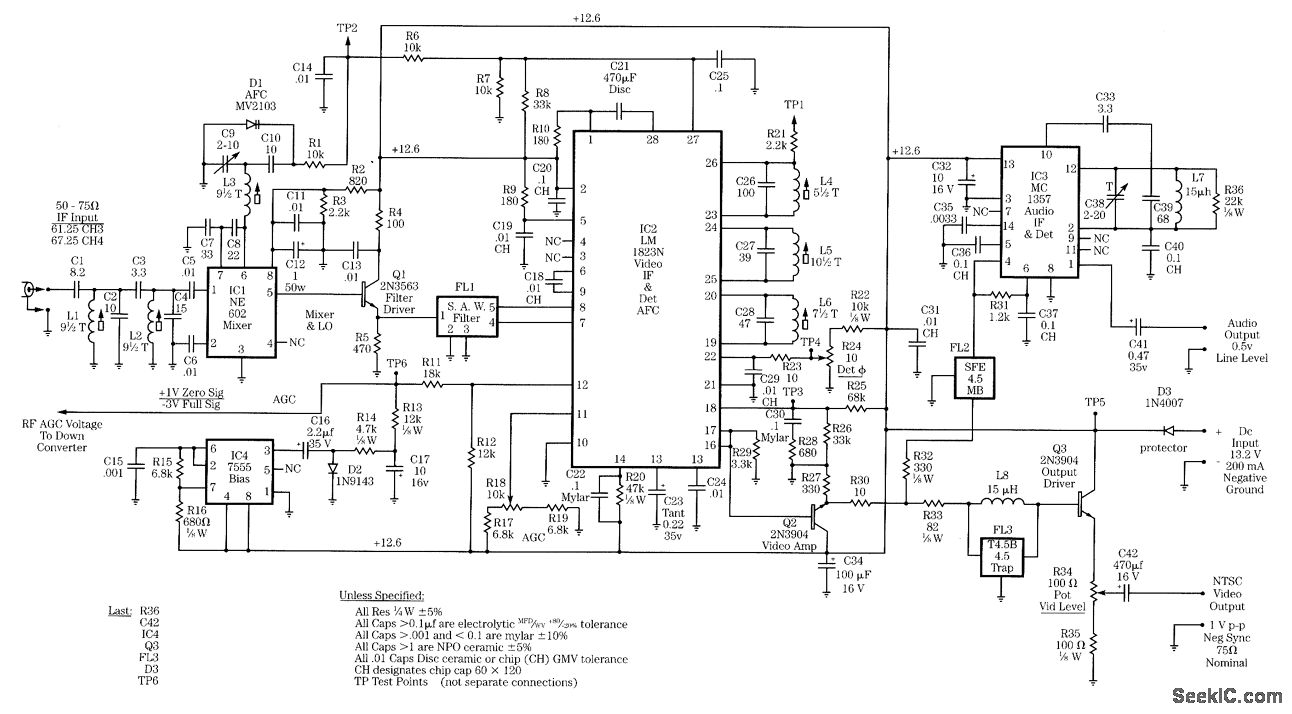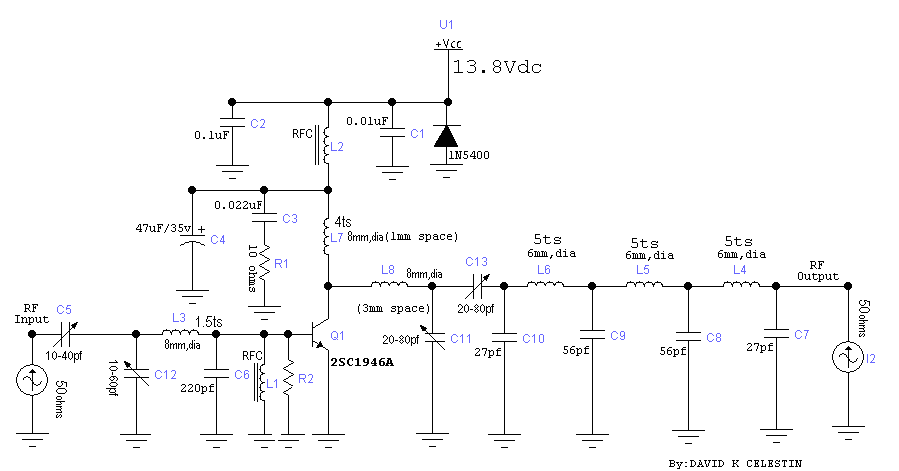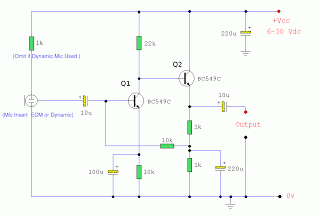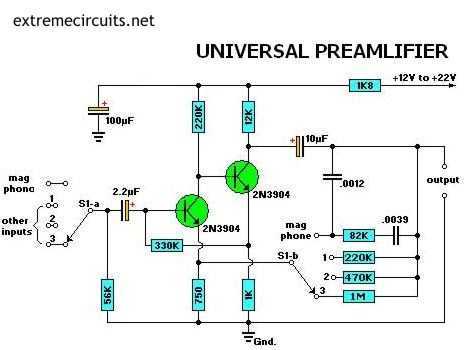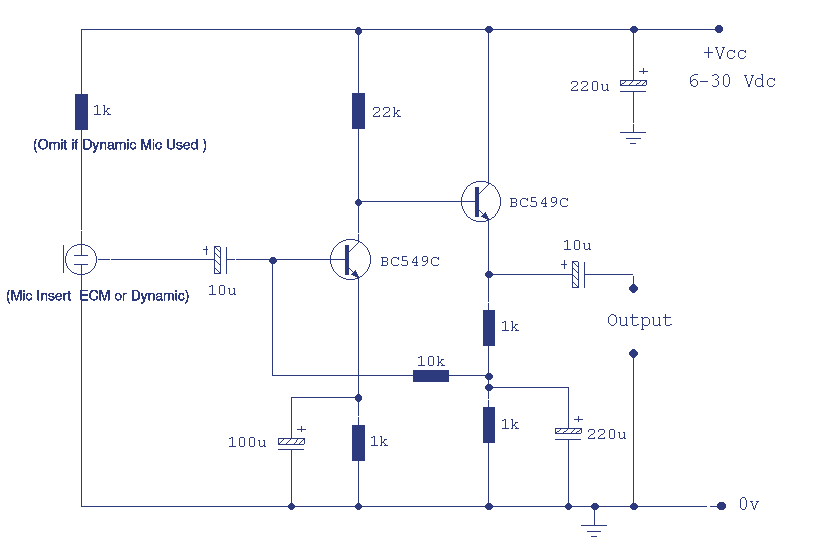
Vhf preamplifier
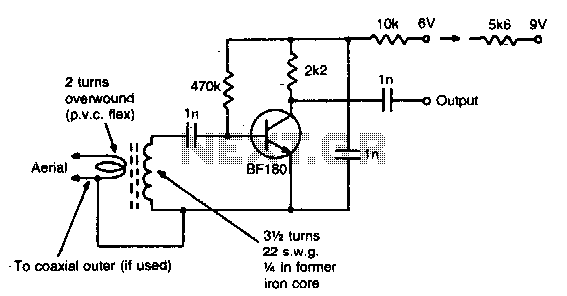
This simple circuit provides a gain of 15 dB and can be mounted on a 1 inch by 2 inch PCB. Coil specifications are provided for a frequency range of 85 to 95 MHz. For other frequencies, the coil should be modified as necessary.
The circuit in question is designed to amplify signals with a specified gain of 15 dB, making it suitable for applications requiring moderate signal enhancement. The compact size of the PCB, measuring 1 inch by 2 inches, allows for easy integration into various electronic devices and systems.
The core component of this circuit is the coil, which is critical for tuning the circuit to the desired frequency range of 85 to 95 MHz. The coil's inductance and the circuit's associated capacitive elements determine the resonant frequency. For operation outside this specified range, adjustments to the coil's inductance or the addition of capacitive components may be necessary to achieve optimal performance.
In practical applications, this circuit can be employed in RF (radio frequency) amplification tasks, such as in transmitters or receivers where signal strength needs to be improved without introducing significant noise. It is essential to ensure that the components used are rated for the expected frequencies and power levels to maintain circuit integrity and performance.
Furthermore, careful consideration should be given to layout and grounding on the PCB to minimize parasitic capacitance and inductance, which could affect the circuit's performance at higher frequencies. Proper shielding may also be implemented to prevent interference from external signals, ensuring that the gain remains consistent across the specified frequency range.
Overall, this circuit is a versatile solution for RF amplification needs, with the flexibility to be adapted for various frequency requirements through coil modification.This simple circuit gives 15 dB gain and can be mounted on 1 in 2PCB. Coil data is given for 85 to 95 MHz For other frequencies modify coil as required. 🔗 External reference
The circuit in question is designed to amplify signals with a specified gain of 15 dB, making it suitable for applications requiring moderate signal enhancement. The compact size of the PCB, measuring 1 inch by 2 inches, allows for easy integration into various electronic devices and systems.
The core component of this circuit is the coil, which is critical for tuning the circuit to the desired frequency range of 85 to 95 MHz. The coil's inductance and the circuit's associated capacitive elements determine the resonant frequency. For operation outside this specified range, adjustments to the coil's inductance or the addition of capacitive components may be necessary to achieve optimal performance.
In practical applications, this circuit can be employed in RF (radio frequency) amplification tasks, such as in transmitters or receivers where signal strength needs to be improved without introducing significant noise. It is essential to ensure that the components used are rated for the expected frequencies and power levels to maintain circuit integrity and performance.
Furthermore, careful consideration should be given to layout and grounding on the PCB to minimize parasitic capacitance and inductance, which could affect the circuit's performance at higher frequencies. Proper shielding may also be implemented to prevent interference from external signals, ensuring that the gain remains consistent across the specified frequency range.
Overall, this circuit is a versatile solution for RF amplification needs, with the flexibility to be adapted for various frequency requirements through coil modification.This simple circuit gives 15 dB gain and can be mounted on 1 in 2PCB. Coil data is given for 85 to 95 MHz For other frequencies modify coil as required. 🔗 External reference
